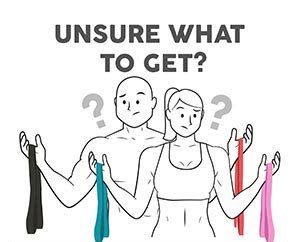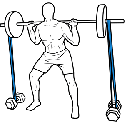Many clients ask me how to increase the number of pull ups they can do. It turns out a lot of people are stuck in their training, frustrated that they plateau and fail to keep progressing. First, plateauing in training is a normal challenge for everyone. The most important thing when it comes to maintaining consistent progressions is a structured approach to your training regimen, where you keep increasing the training load and/or volume.
For example, if a person is capable of doing no more than five pull ups, you may ask what the best way is to increase the number of repetitions? Conventional wisdom may suggest to a few sets of 3-5 pull ups and combine them with pull-downs on a machine. This is not wrong per se, but perhaps is not optimal.
Here is a tried and true method using resistance band for pullups that has achieved a substantial increase in the amount of pull-up reps clients can do. Resistance bands offer a great advantage in every aspect of your training.
The most important thing is that with resistance band exercises, you will be able to do the specific exercise in the correct movement pattern. The reason why this is so important is because it solidifies your muscle memory. Muscle memory is the way the nervous systems interacts with your muscle recruitment pattern to perform a specific exercise.
By using a resistance band, you will be complete more repetitions of difficult bodyweight exercise such as pull-ups. This means that for someone who can do 5 bodyweight pull ups on their own, a resistance band can likely help him/her to complete sets of 8-10 repetitions. This allows you to work on the technique while building strength at the same time.
High repetition is key. This is similar to a 400m hurdler drilling themselves on technique training. It is to train the body to react automatically when passing the hurdles at high speeds. By doing resistance band pull ups, you will help your body learn the correct movement pattern, thus building a strong base and ultimately increasing your number of max reps over time.
The same strategy applies to all other calisthenics exercises. Let’s look at the front lever. The first step into doing a full front lever is starting with the tucked front lever. From here, you will move into the one-legged front lever once you can hold the tucked front lever for 20-30 seconds. This quantum leap is very challenging and requires incredible attention to detail, which is why a resistance band is extremely helpful for prolonging each static rep.
Calisthenics bands free you up to focus on how to activate your shoulders in the right way, how to activate your lattisimus dorsi and your entire core. To do the progress through any calisthenics movements you have to master the basics. To master the basics, you have to complete tons of repetitions.
To complete tons of repetitions, a resistance band is by far the best tool out there. Happy training everyone!
- Henrik
*This article was written by @henrik_deleuran. Henrik is a master personal trainer who travels internationally offering seminars and health workshops on lifestyle interventions, diet planning, fitness, and anatomy and physiology. Check out his Instagram and his site at www.runcoach.dk for more information.




